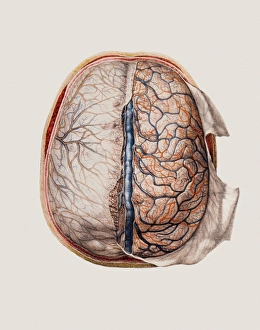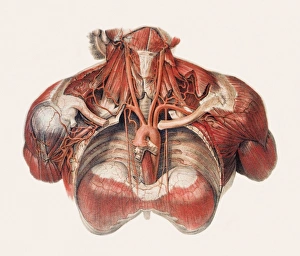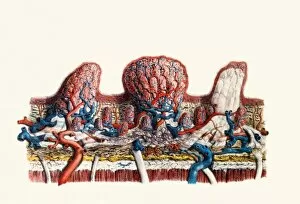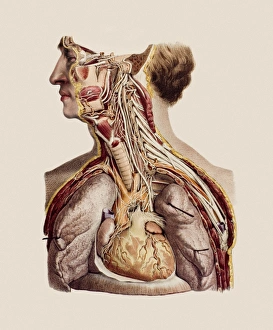J M Bourgery Collection
J. M. Bourgery: Unveiling the Intricacies of Human Anatomy Step into the world of J. M
All Professionally Made to Order for Quick Shipping
J. M. Bourgery: Unveiling the Intricacies of Human Anatomy Step into the world of J. M. Bourgery, a renowned anatomist whose groundbreaking work has revolutionized our understanding of the human body. With an unwavering passion for unraveling its mysteries, Bourgery's meticulous studies have shed light on various aspects, from brain meninges to abdominal organs. Delving deep into the complexities of brain anatomy, Bourgery meticulously dissected and documented the delicate layers that protect this vital organ - the brain meninges. His detailed illustrations vividly depict these protective membranes and their intricate interplay within our skulls. But his exploration didn't stop there; he ventured further into uncharted territories like blood vessels in the chest and neck region, uncovering their pathways and connections that sustain life itself. Additionally, his keen eye captured every minute detail of muscles in the head and neck area, showcasing their role in movement and expression. Bourgery's expertise extended beyond mere observation as he explored surgical interventions such as bowel surgery with precision and care. Through his comprehensive documentation, he provided invaluable insights into these procedures that continue to shape modern medical practices. No stone was left unturned in his quest for knowledge as he turned his attention towards kidneys, nerves, and blood vessels residing within our abdomens. His thorough examination offered a deeper understanding of these essential components' functions while highlighting their interconnectedness. Not limited to internal structures alone, Bourgery also examined external features like papillae on tongues - tiny taste buds responsible for savoring flavors we enjoy daily. He unraveled how they contribute to our sensory experiences through detailed illustrations capturing their unique shapes and arrangements. Moreover, Cranial nerves held no secrets from him; each nerve's origin, pathway throughout our bodies were meticulously mapped out by this visionary anatomist. J. M. Bourgery's legacy lives on through his remarkable contributions to medical science.












